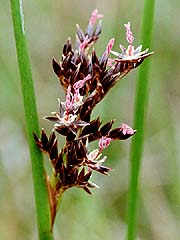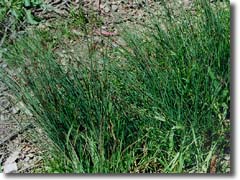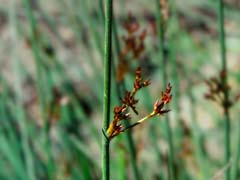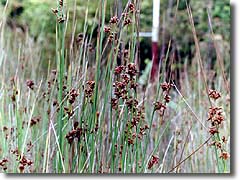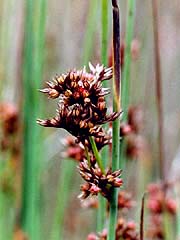 "Rushes are round (and sedges have edges)"
- in general, a good rule for differentiating these two grass-like families.
Of the members of Juncaceae found here, all the stems are round-ish although
some may have flat leaves.
"Rushes are round (and sedges have edges)"
- in general, a good rule for differentiating these two grass-like families.
Of the members of Juncaceae found here, all the stems are round-ish although
some may have flat leaves.
Flowers on rushes are concentrated in terminal inflorescences. Although they appear to be growing out of the side of the stem, the part of the "stem" above the inflorescence is actually one of the inflorescence bracts. Unlike grasses, close examination of Juncaceae flowers reveal distinct flower parts: 3 sepals, 3 petals, 2 to 6 stamens and a pistil with 3 slender styles.
The mature fruit is often beaked or pointed, and contains numerous seeds in a single 3 section chamber. The leaves on Juncaceae are often little more than thin sheaths, sometimes not noticeable at all.
Summer, when the they bloom, is usually the best time to actually identify rushes - at other times of the year they are frustratingly identical. Even then, it usually takes a hand lens and close examination of the flower parts and fruit characteristics to tell for sure. The ones featured on this page are the most distinct in their characteristics and habitats to be somewhat identifiable.
Luzula comosa |

